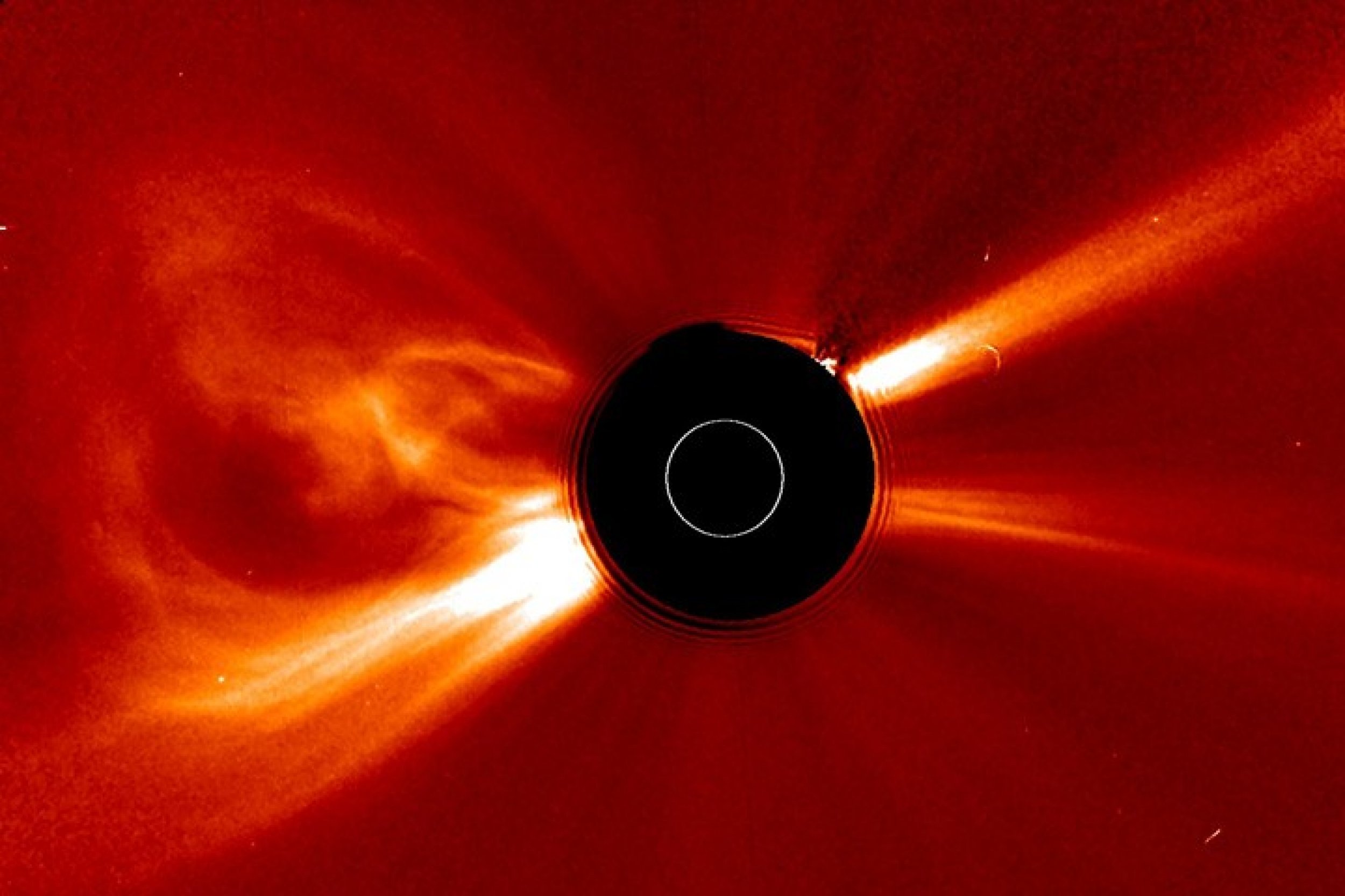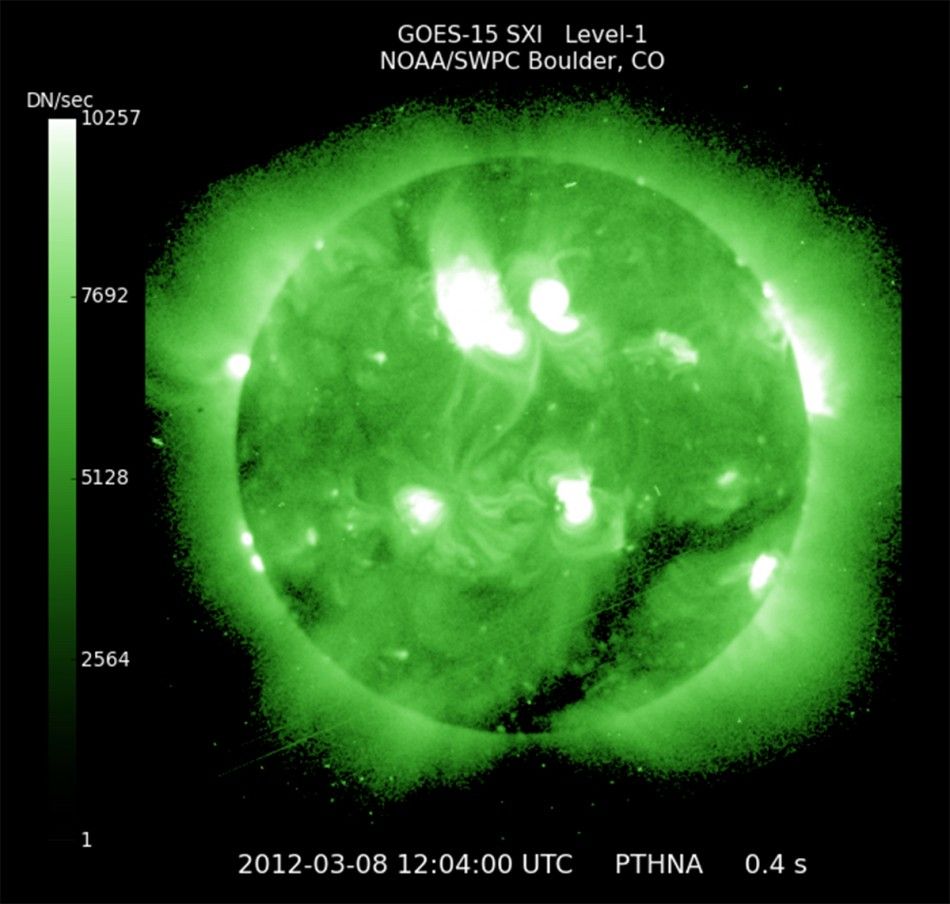Solar Storm 2012: What Is A Solar Storm? [PICTURES]
A solar storm expected to hit Earth on Thursday morning was caused by a massive solar flare that occurred earlier in the week. But what exactly is a solar storm?
When the sun erupts, flares are sent hurtling towards Earth. The most recent eruption on Tuesday evening sent these flares at four million mph. According to NASA, solar flares come from the release of energy by the sun, and are intense bursts of radiation. The storms attack Earth with charged particles that react with gases in the atmosphere. When the two interact, it's possible to see a colorful aurora.
These eruptions cause havoc on Earth technology by ejecting billions of tons of plasma into space at thousands of miles per hour. The plasma holds a magnetic field from the sun which causes the disrupted technology. The magnetic fields in 1989 caused six million people in Quebec to lose power. An increase of electric current in the Earth's atmosphere called ionosphere can also wreak havoc by reflecting communication signals.
According to NASA, these storms can interfere with communications between ground stations and satellites, airplane, pilots and astronauts. This isn't a common occurrence though. When the sun is in solar maximum, or its 11-year-cycle, these solar storms are more likely to hit and disrupt technology.



© Copyright IBTimes 2025. All rights reserved.






















